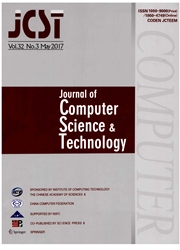

 中文摘要:
中文摘要:
大显示在我们的日常生活变得无所不在,但是这些显示为 sighted 人被设计。这份报纸探讨需要让视觉上损害的人在大装墙的显示上存取目标。我们开发了利用半空中手势输入和触觉的反馈的一个 assistive 接口,并且为把任务指向并且驾驶人的计算机相互作用(HCI ) 检验了它的潜力。在二个实验,窗帘和 blindfolded 用户用半空中手势和反馈的二种不同类型执行了目标获得任务(即,触觉的反馈和听觉的反馈) 。我们的结果证明参加者在用触觉的反馈接口而非听觉的反馈接口削尖任务的 Fitts 法律更快表现。而且,在运动时间(MT ) 之间的回归分析和困难(标志) 的索引证明 Fitts 法律当模特儿,驾驶法律模型为为窗帘的 assistive 接口的评估两个都是有效的。我们的工作和调查结果将用作帮助视觉上损害的人容易用触觉的接口在大公共显示上存取要求的信息的起始的步。
 英文摘要:
英文摘要:
Large displays have become ubiquitous in our everyday lives, but these displays are designed for sighted people.This paper addresses the need for visually impaired people to access targets on large wall-mounted displays. We developed an assistive interface which exploits mid-air gesture input and haptic feedback, and examined its potential for pointing and steering tasks in human computer interaction(HCI). In two experiments, blind and blindfolded users performed target acquisition tasks using mid-air gestures and two different kinds of feedback(i.e., haptic feedback and audio feedback). Our results show that participants perform faster in Fitts' law pointing tasks using the haptic feedback interface rather than the audio feedback interface. Furthermore, a regression analysis between movement time(MT) and the index of difficulty(ID)demonstrates that the Fitts' law model and the steering law model are both effective for the evaluation of assistive interfaces for the blind. Our work and findings will serve as an initial step to assist visually impaired people to easily access required information on large public displays using haptic interfaces.
 同期刊论文项目
同期刊论文项目
 同项目期刊论文
同项目期刊论文
 期刊信息
期刊信息
